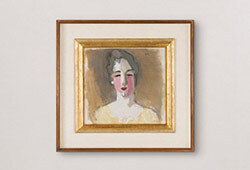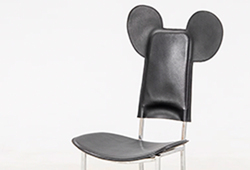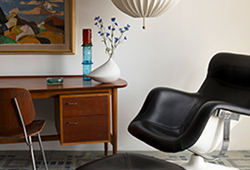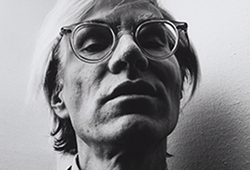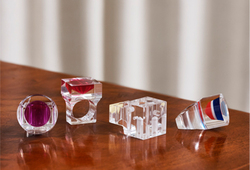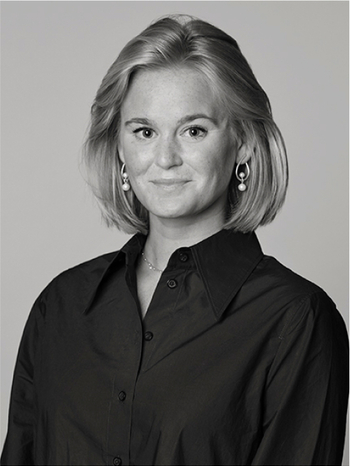Henry Moore
"Maquette for Reclining Figure: Pointed Head"
Signed and numbered 9/9. Conceived in 1982. Sculpture, bronze, height 10.8 cm, length 18.1 cm including base. Foundry Fiorini Ltd, London.
Saleroom notice
Correct height: 10.8 cm. Provenance: Acquired by the current owner at Galleri Fabian Carlsson, London 1987/88.
Provenance
Acquired by the present owner at Galleri Fabian Carlsson, London in 1987/88.
Literature
Henry Moore: Catalogue Raisonné: 1980-1986, LH 826
More information
"There are three fundamental poses of the human figure. One standing, another is seated, and the third is lying down. But of the three poses, the reclining figure gives the most freedom, compositionally and spacially. The seated figure has to have something to sit. You can't free it from its pedestal. A reclining figure can recline on any surface. It is free and stable at the same time. It fits in with my belief that sculpture should be permanent, should last for eternity". Franco Russoli, "Henry Moore - Sculpture", exhibition catalogue, Barcelona, 1981, p. 86.
Henry Moore made large-scale modernist sculptures of the human form. While he took inspiration from African and pre-Columbian art, along with the work of his contemporaries such as Pablo Picasso and Alberto Giacometti, Moore developed his own visual language using marble and bronze. Throughout his career, the artist mostly sculptured the Mother and child and single figures in repose. His style embraced hollows, crevices, and undulating, biomorphic shapes that all complicated the boundary between figuration and abstraction.
The son of a Yorkshire coal miner, Moore enjoyed his first overseas retrospective at the Museum of Modern Art in 1946. He swiftly became an international sensation. In 1948, he represented Great Britain at the Venice Biennale and won the International Sculpture Prize. Today, Moore’s sculptures can be found in public parks and plazas worldwide and in the collections of the Tate, the Guggenheim Museum, the Hammer Museum, the Stedelijk Museum, and the Art Gallery of Ontario. In 2016,
Artist
Henry Moore (1898-1986) was a prominent British sculptor and artist who played a crucial role in the development of modern sculpture. His contributions to the art world are exceptional, and his works have had a lasting impact on art history.
Henry Moore was born in Castleford, Yorkshire, and showed an early passion for art. After serving in World War I, he studied at the Leeds School of Art and later at the Royal College of Art in London. It was here that he began exploring forms and materials that would define his artistic career.
Moore was strongly influenced by artists such as Pablo Picasso and Constantin Brancusi. He was also interested in non-Western art and sculpture traditions, particularly African and Oceanic art. These influences shaped Moore's unique style and his interest in exploring abstract forms and the representation of the human body.
One of the most prominent features of Moore's work is his fascination with the human figure. He experimented with abstracting and distorting the body to create sculptures that express a sense of movement, balance, and harmony. His sculptures often display rounded and organic forms, drawn from nature and the landscape around him.
Moore used a range of materials for his works, including stone, bronze, and wood. He was skilled at harnessing the properties of these materials, giving them a sense of life and movement. His sculptures often have a monumental scale and a presence that impacts the surrounding environment.
Throughout his career, Henry Moore also created many public artworks and monuments around the world. His works can be found in parks, museums, and urban environments worldwide, becoming icons of modern art. One example is his famous sculpture "Reclining Figure" (1951) located in The Art Institute of Chicago. This work has become a symbol of Moore's style and his contribution to the world of sculpture.
Henry Moore's influence extends far beyond his own work. He taught at several art institutions, inspiring an entire generation of young artists. His vision that sculpture can be both abstract and emotionally powerful continues to influence the art world.
Read more




